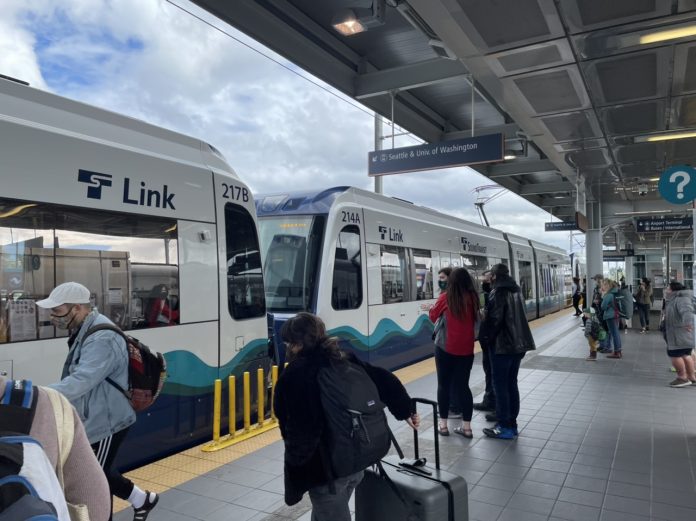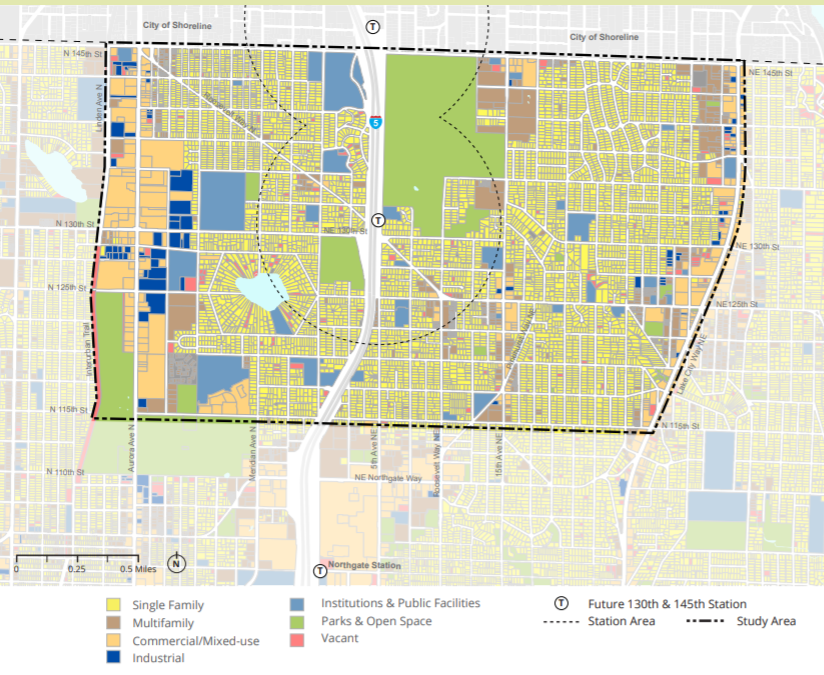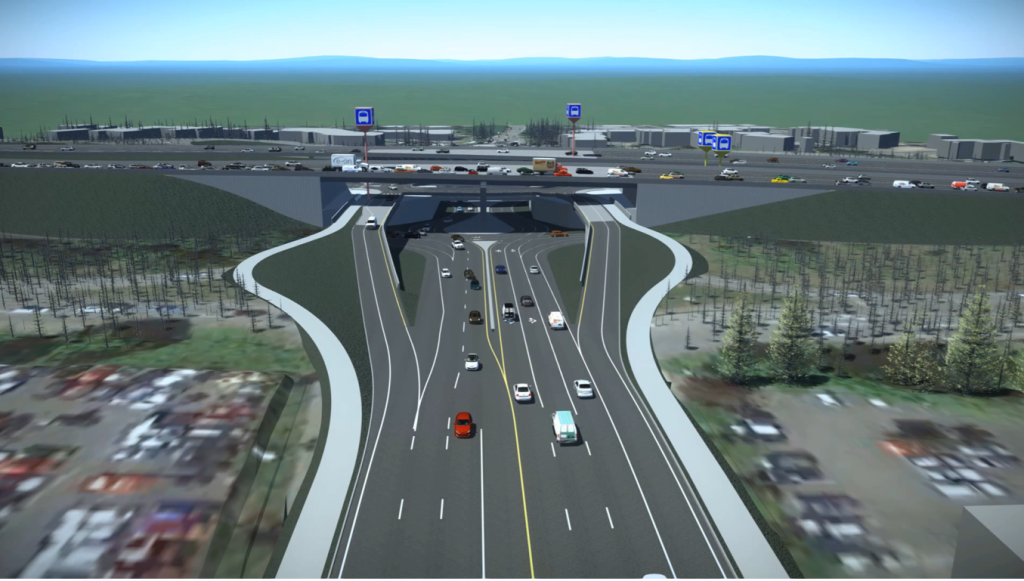NE 130th Street Station opens in 2025 and Graham Street and Boeing Access Road Stations open in 2031 under the amended plan.
The Sound Transit Board of Directors voted Thursday to pursue a hybrid plan that mostly avoids delays beyond modest “planning delays” to the vast majority of the Sound Transit 3 (ST3) program. An amendment also moved up the opening of the NE 130th Street Station to 2025 as the agency flirted with last year, which is just after the rest of the Lynnwood Link extension opens in 2024.
The realignment plan was long in the making and triggered after an affordability gap of $12 billion emerged at the height of pandemic pandemonium, with the worsening economic outlook a drag on revenue forecasts. After improving forecasts continued to whittle away at that figure, the affordability gap is now estimated at $6.5 billion, and stems largely from jumps in project cost estimates. Legal requirements and hopes of keeping its sterling credit rating pushed Sound Transit to adjust its financial plan to react to the gap. The hybrid plan does that with a mixed approach paired with some measured schedule delays and offsets, which could include new revenue or controlling costs through engineering and design changes.
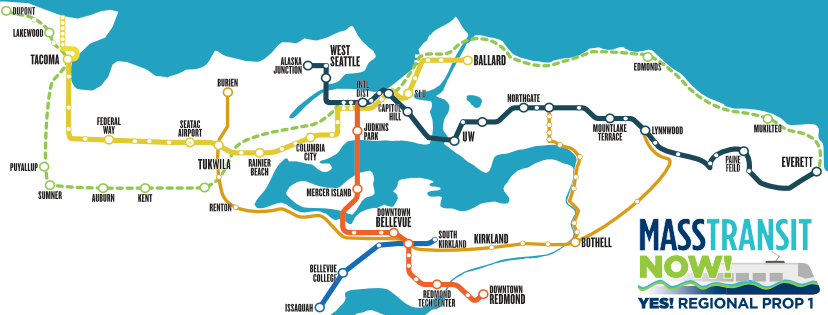
The initial plan to deal with the affordability gap was Chair Kent Keel’s “flexible” realignment plan. That plan immediately reset timelines with considerable delays to rebalance the budget rather than considering new revenue and cost control measures. While Keel called his approach flexible, transit advocates — The Urbanist included — worried that delaying transit timelines would send a bad message and sap momentum for solving the problem with additional revenue or cost controls. For months, it seemed like the Sound Transit board was drifting toward that option and pushing to rush a vote in July.
Balducci’s push leads to hybrid plan
Fortunately, Boardmember Claudia Balducci emerged with an alternative plan that avoided most immediate delays and provided tools to control costs and acknowledge the hope of additional revenue. She convinced her colleagues to give her a little extra time to fine tune the plan.
Her efforts also ended up convincing Chair Keel to merge elements of her framework with his, resulting in the hybrid plan approved yesterday. Plan A tracks to Balducci’s approach, while Plan B uses Keel’s framework for managing the budget via schedule delays, with some tweaks on where exactly the delays would fall. Plan B provides a backup if Balducci’s approach of controlling project costs and adding revenue doesn’t succeed in fully closing the affordability gap for individual projects.
Balducci expressed hope that timelines could be accelerated further, but acknowledged the challenge was just beginning after the vote: “Now the hard part: making good on the commitments we approved this afternoon,” she tweeted. “It will not be easy but it is essential for our region’s success that we complete the light rail and bus rapid transit lines that will connect our economic centers and build a more sustainable transportation future in the face of the climate crisis.”
The final vote on the hybrid plan came after weighing 11 amendments to it. Every amendment the board took up passed unanimously, but four of the proposed amendments were left on the cutting room floor and deemed unneeded or redundant. More details are on Sound Transit’s realignment website.
Amendment 7 accelerates Seattle’s infill stations
Keel’s Amendment 7 provided perhaps the most tangible change by avoiding planned delays for Seattle’s three infill light rail stations and actually accelerated NE 130th Street Station to 2025. Seattle Councilmember Debora Juarez expressed her strong support for the amendment as a longtime advocate of building the 130th Street Station (in her district) as soon as possible. She said it was vital to supporting dynamic economic growth in her district.
The City of Seattle is weighing land use changes near the station that could include broad upzones and repurposing Jackson Park Golf Course, which consumes much of the land east of the station and dedicates itself to a declining sport that a Seattle Parks and Recreation survey showed as Seattleites’ lowest priority for investment by a long shot. Converting the golf course into a public park with a more diverse array of uses — potentially including social housing in the edges closest to light rail — would be a huge upgrade.
Similarly, Puget Sound Sage has led a planning effort around Graham Street Station aimed at promoting equitable development and avoiding displacement. The six-year delay planned before the amendment would have been a blow to those plans. Puget Sound Sage’s equitable development organizer Abdi Yussuf emphasized this point at an “ST3 Now” press conference in July that The Urbanist also took part in.
“It would be disappointing to see Graham Street station significantly delayed because our community partners have been waiting for the station for a long time,” Yussuf said in a statement. “There are many community anchors that have been waiting for the connections and opportunities that come with the light rail. In 2018, the Graham Street Community Action Team created a shared neighborhood vision for an equitable transit-oriented development around the future light rail station. Our long-term goal has always been to plan early, take land out of speculation, create community capacity for local development, and launch community projects that work together to create a vibrant and resilient transit-oriented neighborhood.”
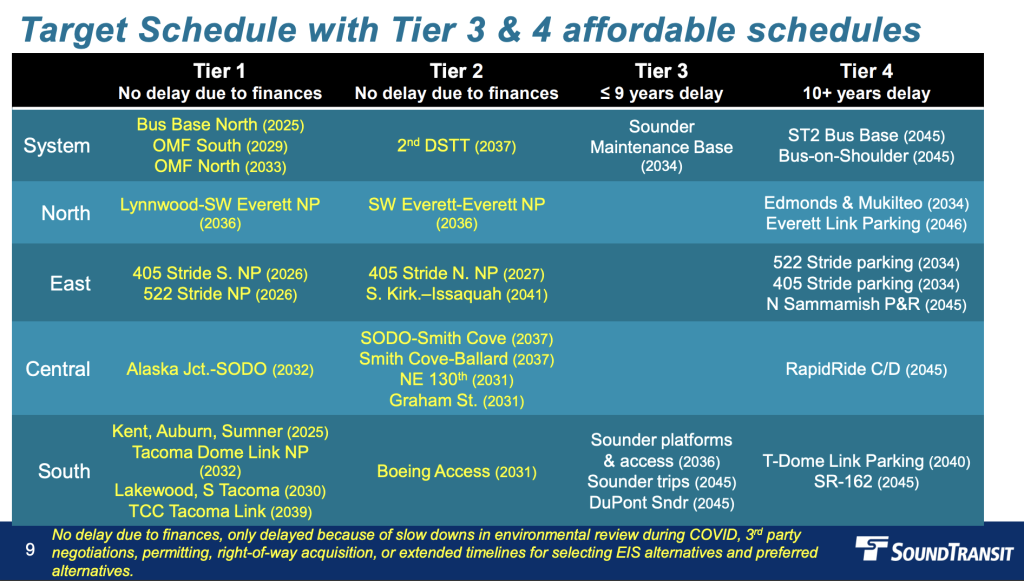
To offset the cost of accelerating the stations, Keel had planned to use a one-year delay to the Smith Cove to Ballard light rail segment that would have pushed it to 2040. But he relented — perhaps hearing some pushback — and switched the offset to delaying projects elsewhere: the Lake Forest Park parking element, South King County Sounder station access improvements, and bus-on-shoulder upgrades. The bus-on-shoulder work turned out to be more complicated and less helpful than Sound Transit hoped, staff noted.
Amendment 10 moves up Kirkland’s NE 85th Street Station to 2026
Balducci’s Amendment 10 accelerates Kirkland’s NE 85th Street Stride bus rapid transit (BRT) station from 2027 to 2026. The offset for this change was delaying the Kingsgate parking element by one year. The amended timeline still is two years slower than initial plans, but staves off another year of delay. Sound Transit has indicated that the pandemic has slowed planning, permitting, and construction work, which is causing some delays beyond pure financial constraint — and the two years of delay here is fairly typical systemwide.
Initial ST3 plans had aimed to complete all bus rapid transit lines in 2024, and Sound Transit had still been indicating that was possible in January 2020. But then the pandemic happened. Sound Transit split I-405 BRT into a northern and southern segment, which both terminate in Downtown Bellevue allowing for transfers. With state highway expansion work that I-405 BRT North was relying on delayed by the pandemic, the line was pushed to 2025; I-405 BRT South was still set to open in 2024. But as the extent of pandemic and cost overrun damage to ST3 budgets became apparent, both were pushed to 2026, with the complex inline NE 85th Street Station pushed to 2027. The amended plan, however, allows the interchange and inline station to be delivered in 2026 while the I-405 BRT North line itself will come a year later in 2027.
The NE 85th Street station is embedded into I-405 in a bizarre hot-wheels style three-level interchange. Still, Kirkland is hoping to get significant transit-oriented development near the station, even if it’s doubly bisected with a highway and wide arterial road. As Brandon Zuo noted, the plans do favor office development over housing and most of the highrise zoning and density would be focused near the highway.
Amendment 4 could further bus connections and microtransit in lieu of parking
The hybrid plan puts most of ST3’s planned parking — which tallies nearly a billion dollars in all — in Tier 4, meaning those projects are first to be delayed and would face the longest delays. Amendment 4 seeks to provide a review program to study how riders get to the station and support bus connections and microtransit to make sure riders can still get to the stations before parking is built. It’s a sensible program that may come up with solutions to get more riders to the stations.
Amendment 9 accelerates parking structures in Pierce County
Pierce County boardmembers took a different tact and fought to accelerate parking structures rather than embrace alternatives, and they traded away transit service to get it. Amendment 9 moves up parking structure building in South Federal Way and Fife, and uses the offset of delaying additional South Sounder trips until 2046. Pierce County Executive Bruce Dammeier, Tacoma Mayor Victoria Woodards, and Fife Mayor Kim Roscoe sponsored the amendment and argued for parking prioritization.
Amendments 2, 5, and 6 offer minor governance tweaks
Amendment 2 adds note of five core principles the board had laid out in two previous motions and adds language to the plan for “expanding regional transit to the Central Puget Sound region are essential to address climate change, reduce greenhouse gas emissions, and build a sustainable future for the Puget Sound region.”
Amendment 5, sponsored by Dammeier and Snohomish County Executive Dave Somers, seeks to add more of a guardrail to prevent different subareas from impacting each other’s projects negatively by draining the coffers. It wasn’t clear this was going to be an issue anyway since subarea equity is already a well-establishment principle at Sound Transit, but the amendment provides extra assurance. Specifically, the amendment adds this sentence to the plan: “The Board will not authorize final design, ROW, or construction expenditures on any individual project which would cause delay to the Affordable Schedule for other projects unless the project’s funding gap has been offset.” Boardmembers had a long debate about what this really means in effect, and it was agreed the Systems Expansions Committee would daylight how this clause ends up being interpreted and thus operationalized.
Amendment 6 from Seattle Mayor Jenny Durkan beefs up milestone reporting provision in the hybrid plan. She adds language to a paragraph so that it read: “Routinely inform the Board of Directors on the agency’s adherence to schedule milestones during the planning and design process for all projects and identify where any delays in these pre-construction activities are processes is likely to trigger a delay in the final delivery date of any project and establish new milestones to monitor during the construction and testing phases for the same monitoring and report any construction and testing delays that will trigger a delay in final project delivery.” Some boardmembers had felt blindsided by delays and cost overruns in the past and felt the agency may have concealed that news, so this section aims to rectify that.
Tough work ahead
Boardmembers appeared jubilant at the end of the three-hour meeting and many heaped praise on Chair Keel for navigating them through the process. He received special accolades for coming up with a fix to accelerate Seattle’s infill light rail stations, which are pretty cheap when compared to the cost of whole light rail lines, making the long delays hard to stomach.
But as King County Council President Balducci said, tough work lies ahead to make sure the promise of the hybrid realignment is fulfilled. To continue to stave off delays will require the agency, with guidance from the board, keep project costs in check and locate new revenue as necessary to close the affordability gap without using the schedule delay lever. Cities and counties will need to pitch in by reaching consensus in a timely manner and clearing the way with permits and station access improvements. Chair Keel made this point as well in his statement.
“In the next three years Sound Transit will nearly triple the length of our light rail system from 22 to 62 miles,” Keel said. “The realignment plan will guide our work to expedite the next waves of projects, including reaching Tacoma, Everett, West Seattle and Ballard and delivering bus rapid transit and Sounder expansions. These projects are critical for keeping people moving in the face of our population growth and for protecting our economy and environment. To succeed, we will need expanded collaboration at the local, state and national levels.”
Balducci gave credit to transit advocates for calling for and clearing the path for the hybrid plan, and The Urbanist would also like to thank everyone who heeded the calls to action from us and our allies or who followed our in-depth coverage and spread the word.
It’s clear the region recognizes the need to build rapid transit as soon as possible to keep the people moving, keep the economy humming along, and push carbon emissions and pollution onto a sharp downward trend. Now it’s a matter of doing the work.
Doug Trumm is publisher of The Urbanist. An Urbanist writer since 2015, he dreams of pedestrian streets, bus lanes, and a mass-timber building spree to end our housing crisis. He graduated from the Evans School of Public Policy and Governance at the University of Washington in 2019. He lives in Seattle's Fremont neighborhood and loves to explore the city by foot and by bike.

